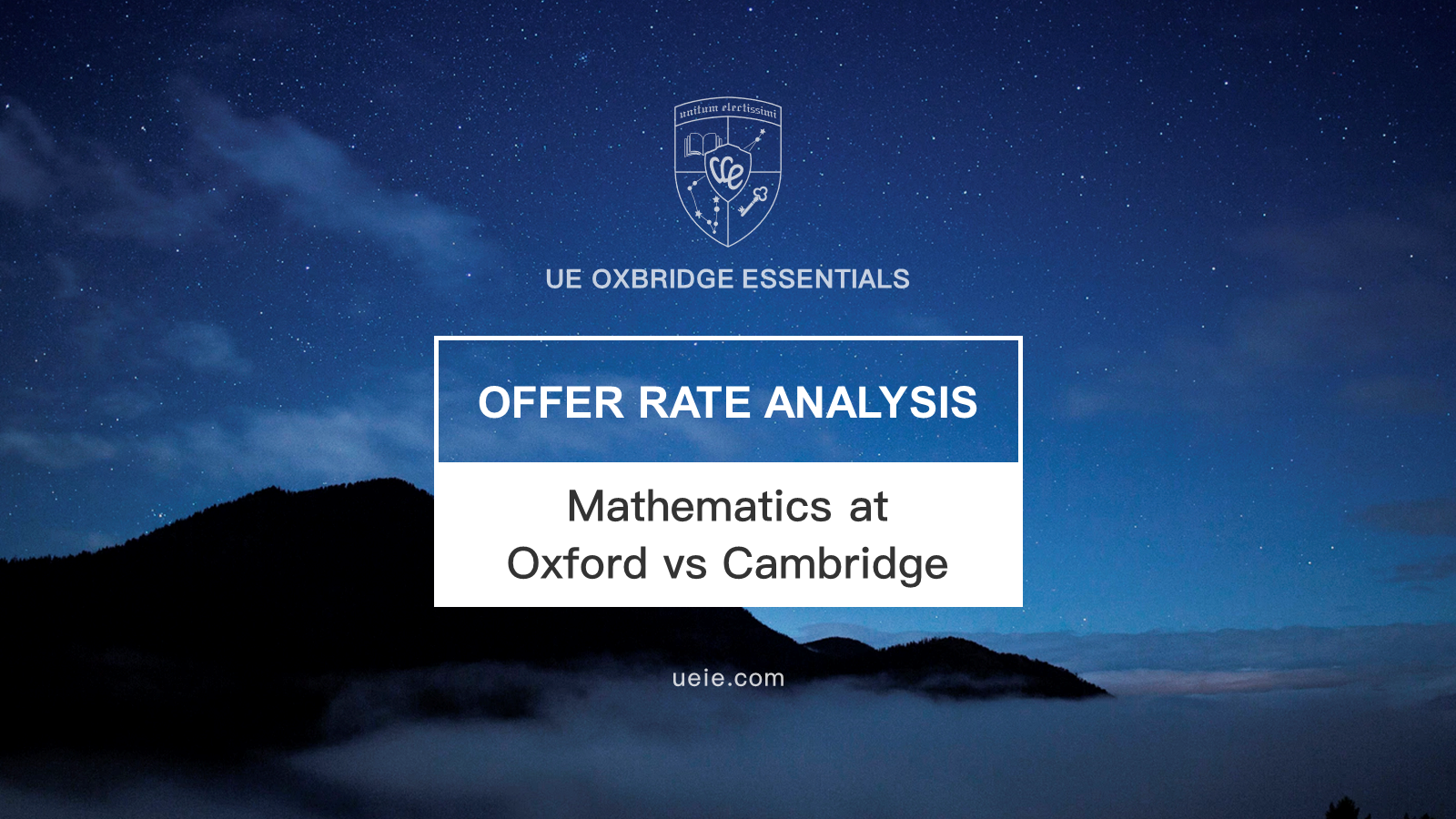This article is included in Oxbridge Essentials® “Mathematics Collection”
I.Comparison of Application Popularity
1. Overview of Application Data for the Mathematics Majors at Oxford and Cambridge in 2020
From the chart below, it’s evident that the Mathematics major is extremely popular—ranking second among all majors at Oxford University and fourth at Cambridge University. Chinese students show a particular preference for Mathematics at Oxford, where the number of applicants from China ranks first among all subjects.
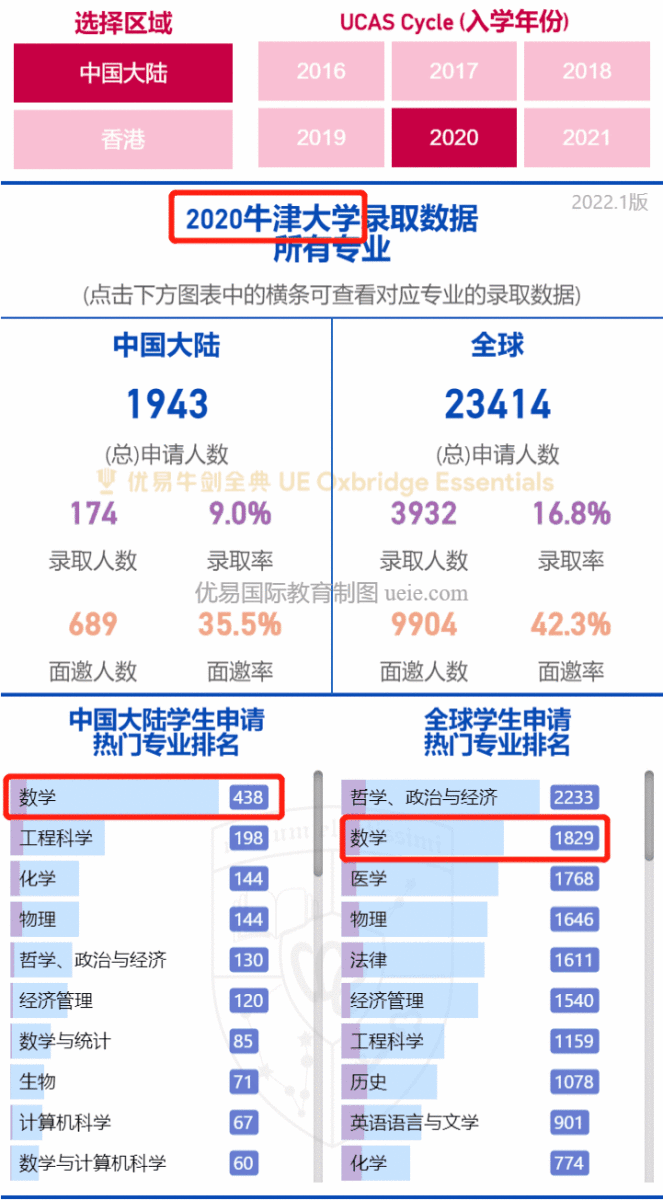
Moreover, during the 2020 application season, the global number of applicants for Mathematics at both universities was quite similar. However, the number of Chinese students applying for Mathematics at Oxford was more than double that for Cambridge, underscoring the high regard in which Oxford’s Mathematics program is held by Chinese students.
2. Proportion of Chinese Applicants from 2016-2021
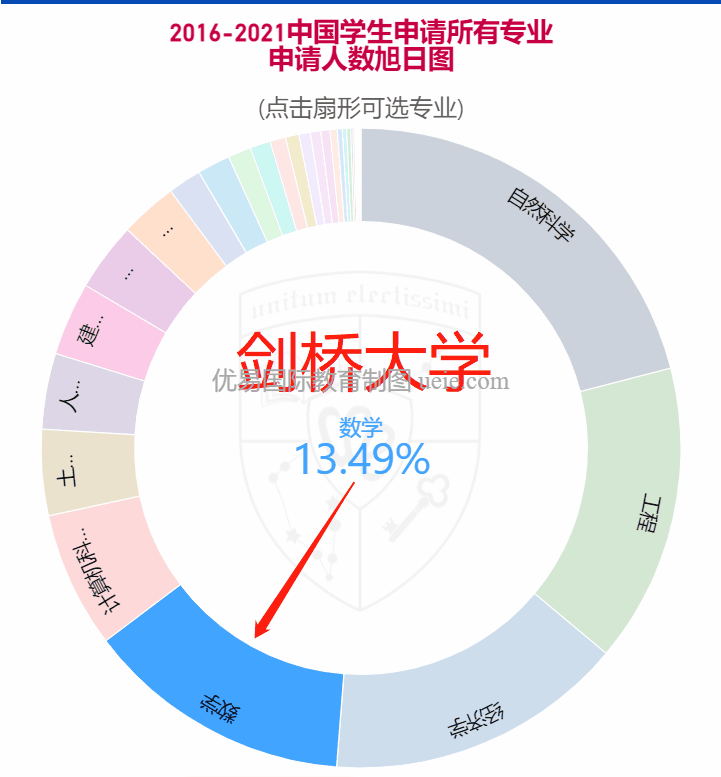
Over the six years from 2016 to 2021, the proportion of applicants from Mainland China (excluding Hong Kong, Macau, and Taiwan) to Oxford’s Mathematics courses exceeded 20%, which is equivalent to the total number of applicants for the three courses categories of Engineering, Physics, and Economics & Management combined. During the same period, Chinese students applying to Cambridge accounted for about one-seventh of the total, not the most sought-after but still a notably high proportion.
3. Difficulty for Chinese Applicants from 2016-2021
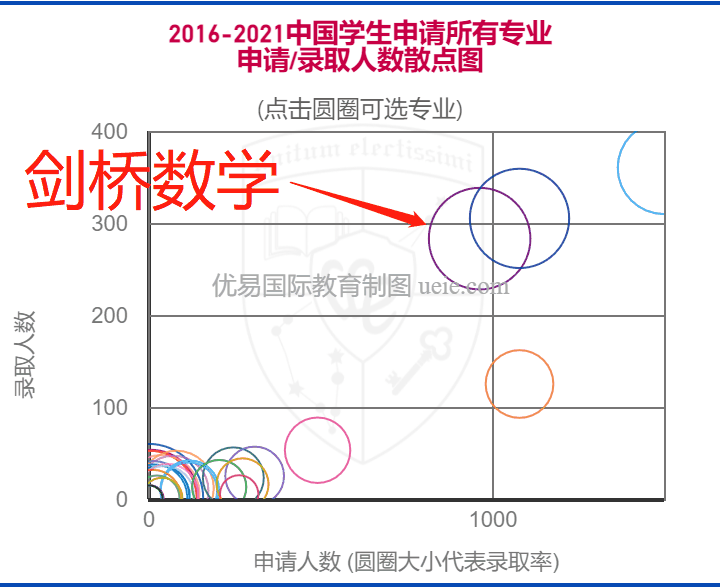
The scatter plot suggests that the competition for Chinese students applying for Mathematics at Oxford is significantly more intense compared to other subjects at Oxford, resulting in a much lower acceptance rate (indicated by the size of the blue circles on the chart).
The intensity of competition for Chinese students applying to Cambridge’s Mathematics program is substantially lower compared to other subjects at Cambridge. It is important to note that the STEP exam will eventually filter out some offer holders for Cambridge’s Mathematics program, so the actual number of Chinese students enrolling (or the actual acceptance rate) will be lower than the figures shown in the chart. Despite this, Cambridge has been relatively generous to Chinese students, issuing over 60 offers annually in recent years.
Oxford and Cambridge Chinese Student Admission Data (Free Trial, Subscription Required)
II. Comparison of Application Trends
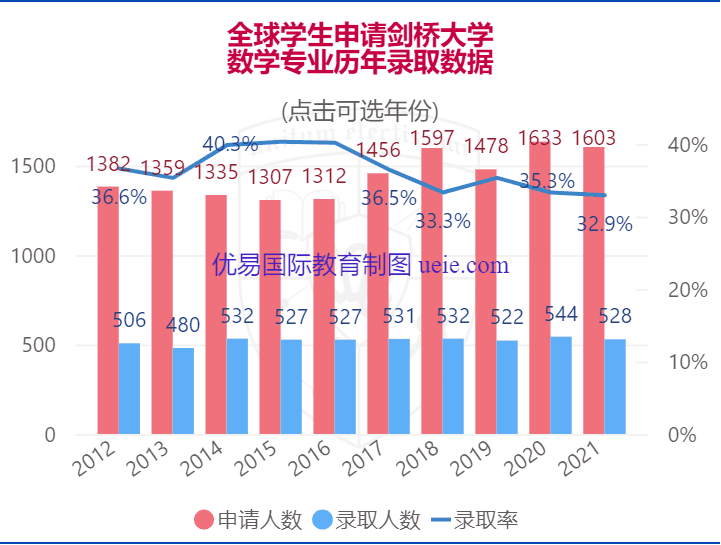
Over the last decade, the trends in global application numbers and acceptance rates for the Mathematics courses at Oxford and Cambridge have been quite pronounced: the number of applicants for Oxford has doubled while the acceptance rate has been cut by half, whereas Cambridge has seen less than a 20% increase in applicants, with acceptance rates fluctuating around 35% in recent years (however, the actual number of students meeting the admission criteria and enrolling in Cambridge for Mathematics hovers around 250, with actual acceptance rates fluctuating around 15%).
The acceptance rates for Chinese students in recent years have been generally 2-3 percentage points lower than the global average, with more volatile trends, significantly increasing the difficulty for Chinese students applying for Mathematics at Oxford and Cambridge.
III. Gender-based Application Difficulty Comparison
Globally, about 5.2% of male applicants apply for Mathematics at Oxford, while only about 2.6% of female applicants do. The gender ratio for Cambridge’s Mathematics applicants is even more pronounced—nearly 4:1.
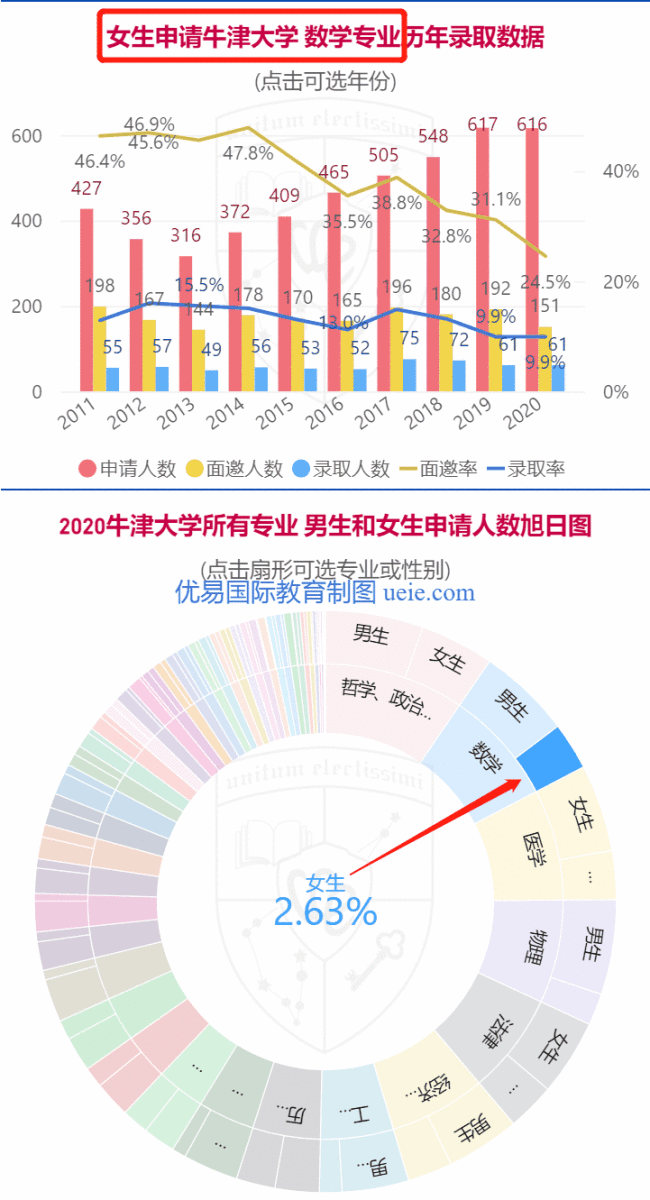
Looking at the acceptance rate data, despite the number of female applicants for Mathematics at Oxford being half that of males, females don’t seem to have any advantage; in fact, their acceptance rates are a few percentage points lower each year.
The situation at Cambridge is different—the acceptance rates for females and males are roughly the same, and in some years, the rate for females is even higher. However, due to STEP scores and other factors, the number of females who ultimately enroll at Cambridge is only about one-third of those who receive offers, making the actual acceptance rate for females much lower than for males.
One last point: the actual acceptance rate for males applying for Mathematics at Cambridge is about 4 percentage points higher than for Oxford, while the difference in actual acceptance rates for females applying to both institutions is only about 1%. This indicates that it’s harder for males to get into Oxford, and while females may find it easier to receive an offer from Cambridge, various reasons prevent these offers from being finalized, resulting in no significant advantage in actual acceptance rates compared to females applying to Oxford.
IV. Comparison Across Other Dimensions
Due to the limitations of article length and the functionality for dynamically displaying data, the comparisons above are made only across three dimensions regarding the difficulty of applying to the Mathematics programs at Oxford and Cambridge. The UEIE official website (ueie.com) offers dynamic charts and analyses of Oxbridge admissions data, providing insights by region, application method, and college, covering a variety of majors over the past ten years globally and the past six years for Chinese students.

